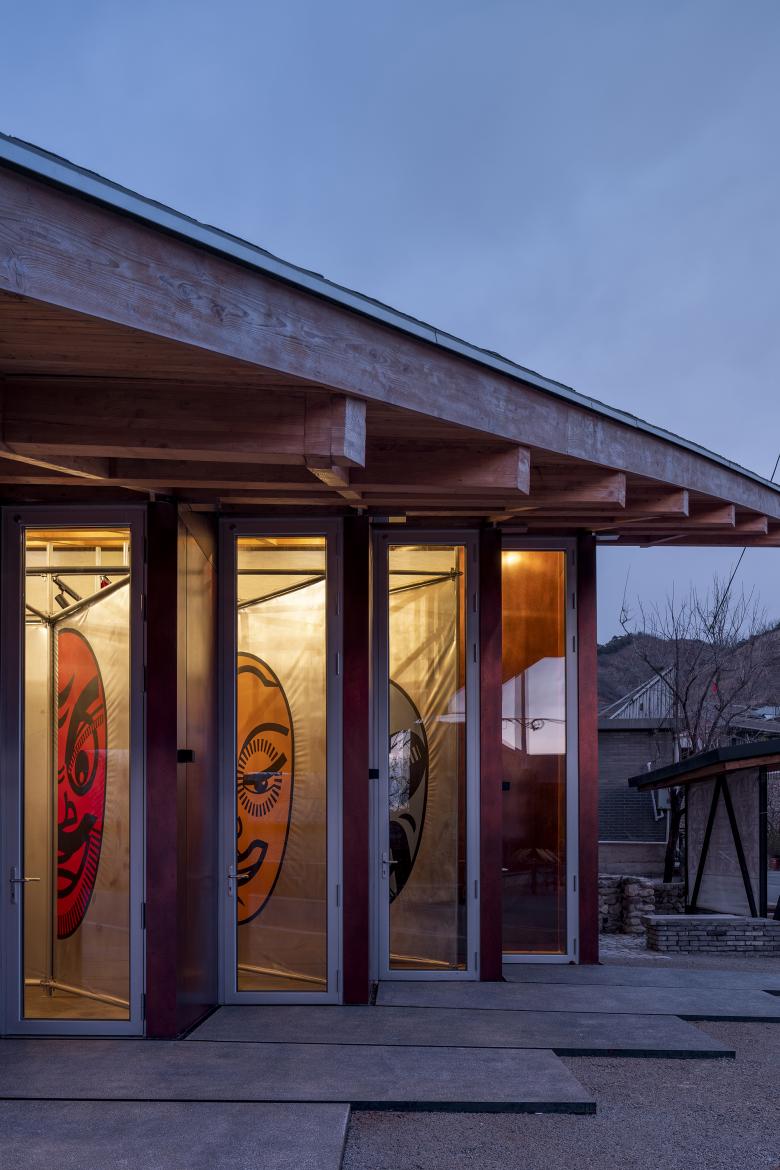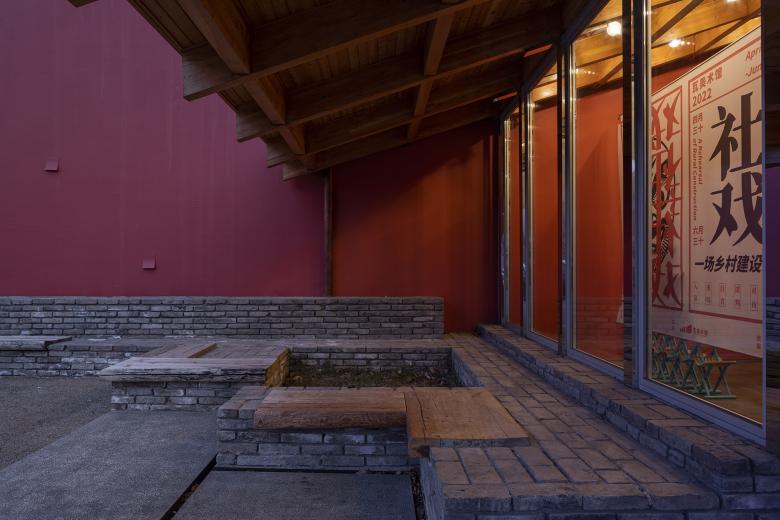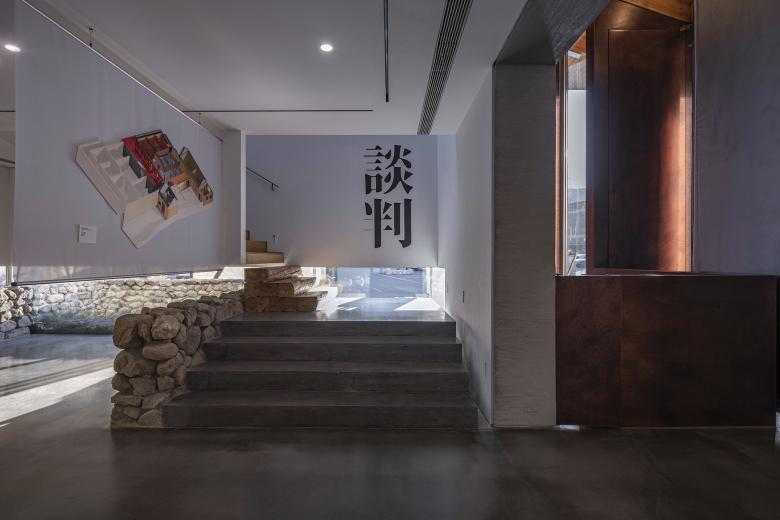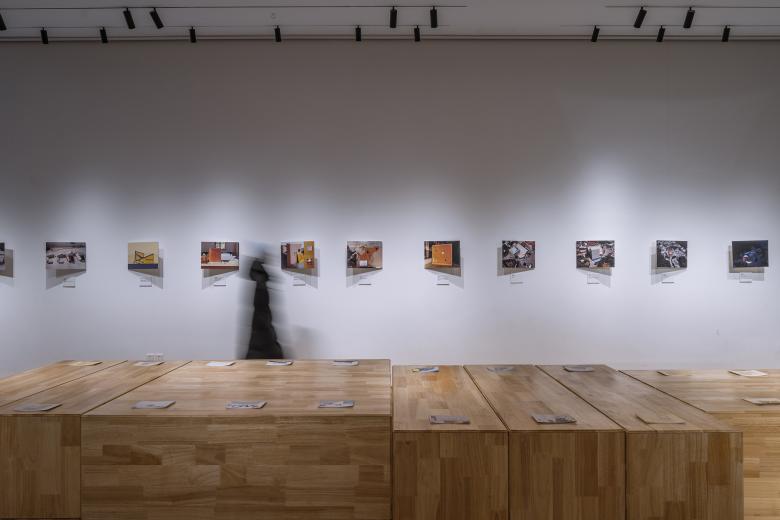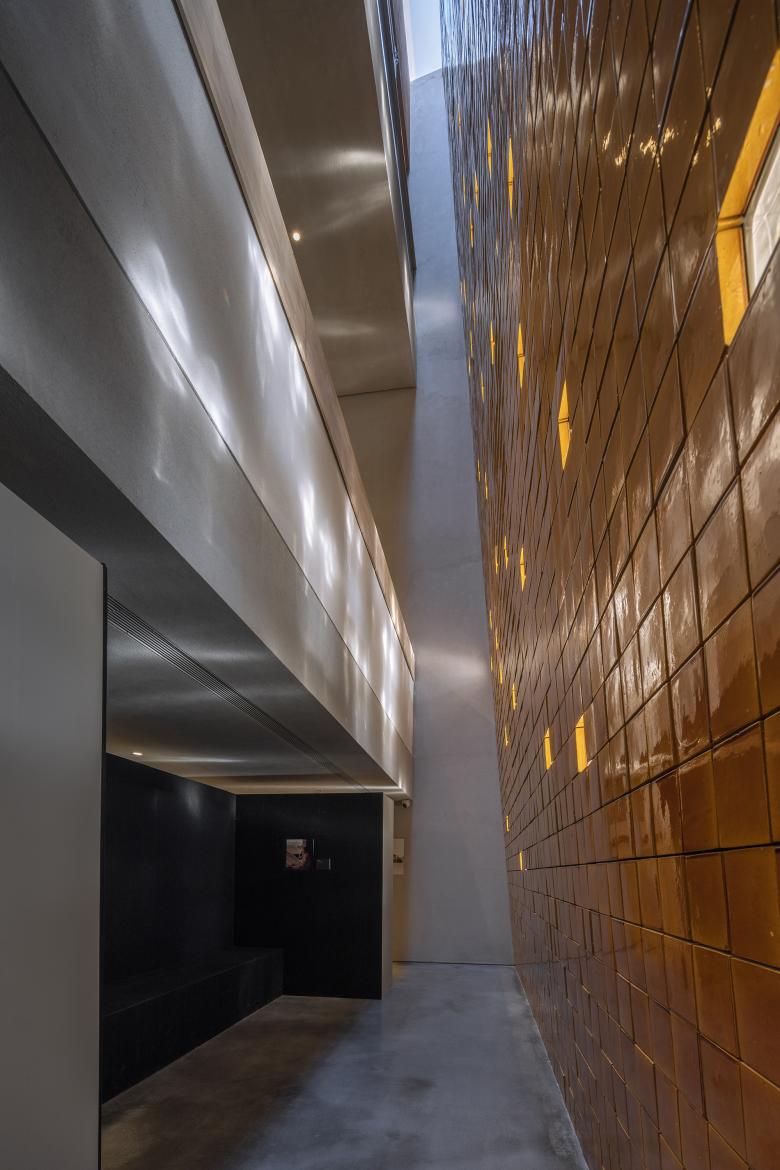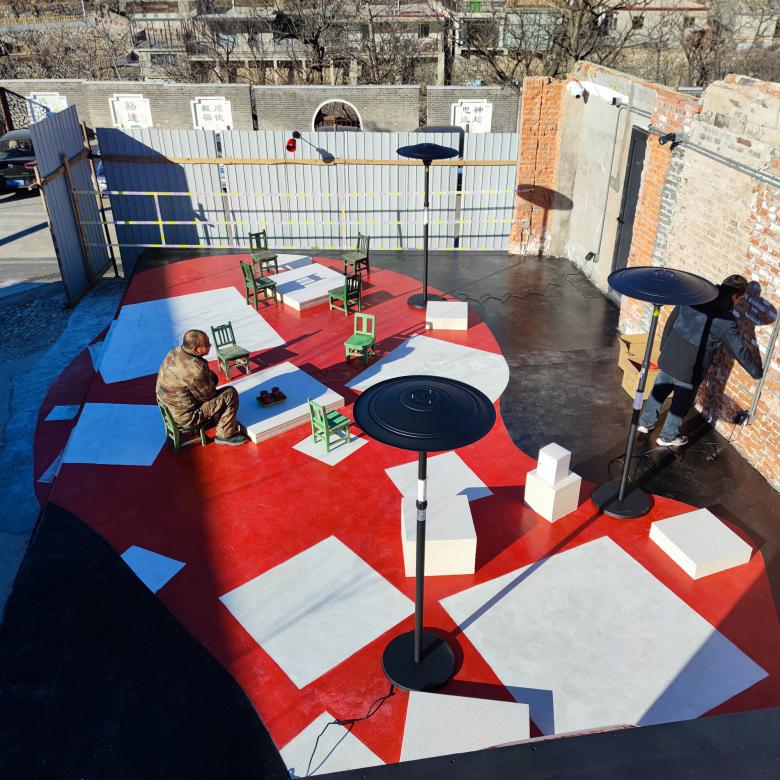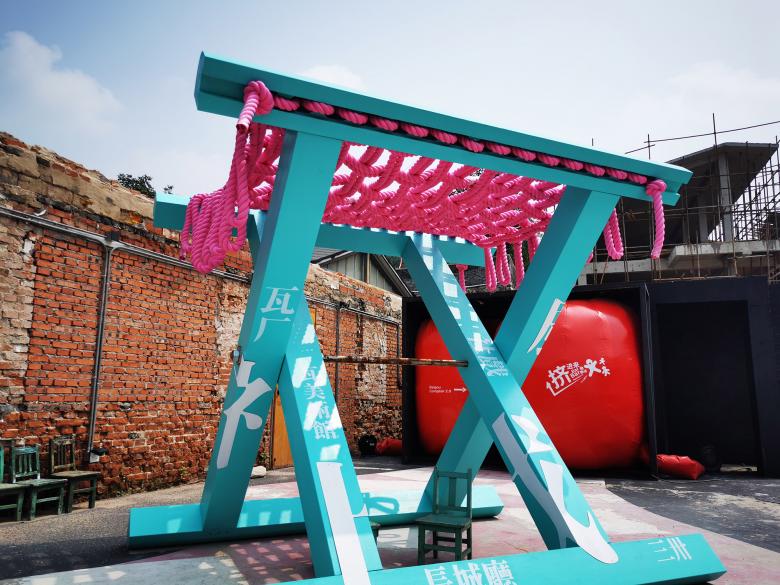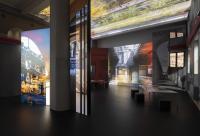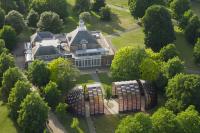Village Opera by llLab.
Project name: Village Opera by llLab.
Project Location: Beigou Village, Huairou, Beijing, China
Project Architectural Design: llLab. (www.lllab.net)
Site Area: 540㎡
Total Construction Area: 660㎡
Footprint Area: 363㎡
Landscape Area: 177㎡
Project Timeline: January, 2022 - April, 2022
Project Status: Exhibition on going
Curator: Yujun Yan
Project Team: Ziyu Wei, Chao Zuo
Project Partners: Luis Ricardo, Hanxiao Liu
Photography: Jin Weiqi, llLab.
llLab.'s New Work | 2022 Village Opera, A Rehearsal of Rural Construction
Cultural backgrounds: Rural Revitalization, Rural Construction and Human Intervention
Modern society has released people from the contract with their land, and the human heart is no longer bound to the earth. When people are no longer attached to the land for granted, villages face the dilemma of what shall it use to grow and retain people.
With the rapid development of cities, the countryside has become a selfless supplier of production factors such as land resources and human capital. Those villages that are not rich in arable land, like Beigou Village, can only export young and middle-aged labor to the outside world. This loss of population desertified the land and dilapidated dwellings. What cannot be bypassed in revitalizing the countryside is to reverse this one-way flow of people from the village to the city, allowing people to return from the city to the village, whether it is for short-term consumption or long-term living and working.
Confronting a village awaiting both economic and cultural revitalization, architects from the outside, like us, demand an anchor for our practice. Clinging to the narrow path is the default prescription of modern architecture; unfolding in front are numerous symbols and clichés tempting one to pick from. Yet the answer does not reside in built forms. The power of rural construction lies in its ability to bring the workers back and to bring visitors in, thus reversing the one-way flow of people and repopulating the countryside. Construction of new relations and interactions (among locals, outsiders, initiators of construction, owners of land, workers in villages, villagers, village officials, construction teams from outside, tourists, visitors, and architects) is as important as putting up buildings. Beigou's experience tells us that, the interaction between people and the collision among groups are the process and result of rural construction. The manual is in fact the human.
Target and Exhibition Space
The purpose of Village Opera is to use the series of architectural practices in Beigou Village as a sample to demonstrate the complex relationship and interaction of characters behind rural construction. By curating an exhibition with multiple tones and melodies, interactions among groups (of different background, interests, responsibilities and rights) are transformed into different scenes of display. Characters come up stage, and the perspectives of the exhibits are constantly changing, inviting villagers and visitors for a role-play.
The exhibition is divided into seven main spaces, of which six are the main line of the Play in WAAAM (WA Art. Architecture Museum): Prologue, Ensemble, Negotiation, Soliloquy, Duet and Epilogue, when Encore locates at the plot of "Ambeigoity", where the Experiment of Rural Land-Use has been conducted.
Prologue connects with the central plaza of the village and is the opening living room of the exhibition. Workers, architects, villagers, developers, tourists... Are there insurmountable boundaries between different roles? People observe and imitate each other in Beigou, and finally gather under the eaves of WAAAM.
Ensemble, the first Act, is located on the ground floor, within the foundation of the original farmer's house, upon which WAAAM stands. Rough rubble bases are scattered and the exhibition scene emphasizes this sense of the archaeological presence. The content features San Sa Village–Construction Phase, Beigala Nostalgic Station and the Farmers' House Collective. Old houses, new buildings, old villagers, and construction teams are constantly provoking each other's territory in the process of development of the village. The construction team seems to have become an archaeological team, when the discussions about history and memory emerge.
Act II, Negotiation is located on the second floor of the original site. The space is left sharp and sober, on contrary to the multi-media hodgepodge of Ensemble, to display WAAAM as a rural development and an architectural project. The alternation of different roles in the construction process of WAAAM expresses the definition and intervention of different standpoints on building a museum in a village and on the building itself.
Soliloquy (Act III) is a sound space tucked in a small pocket under the glazed tile wall, where the light and shadow are full of dramatic tension. The exhibition of San Sa Village-Architects' Inner Monologues invites visitors to walk through the narrow corridor of deep self-reflections and debates within, confronting and questioning how those who have the right to design can use it and finally reconcile with themselves.
Winding up the tower, a new landmark of the village, Duet (Act IV) starts from the staircase gallery and ends with the "grand view" out the terrace. It's cast features the New Brickyard Retreat – Designer vs. Sightseer; both its content and the way of display expand on the topic of Perspective in designing Scenes in the countryside. How should designers and visitors (both outsiders of the village) uncover the scenery in their minds? Will different perspectives miss/cross each other's feelings? The design of the New Brickyard Retreat carefully balances such details, and only the Great Wall in the distance always overlooks all of this.
Located on the big steps is the final Epilogue. When all the characters and visitors gather here, it's like being in an open-air cinema at the entrance of the village. The moments of Beigou Village change and change on the screen with its people themselves suddenly have their momentary sense of heroism.
Extension: Ambeigoity_Spontaneous Activation and Experiment of Land-Use
At Beigou Village, it has been 7-8 years since our first participation in the projects of environmental revolution and rural revitalization. Yet, when all progressive development has turned into reality and has been implemented in the actual interactive experiences, the lacking of certain particular matters is becoming obvious.
A sudden landslide destroyed the old house, leaving dozens of square meters of open space, and the impact of the epidemic has continued to reduce the original functional demand of dining, which has brought uncertainty to the purpose of the space, thus, providing a possible venue for the imagination and experimentation of expanding the rural spatial agenda.
An impromptu site exploration, as an experimental temporary exhibition of "Village Opera, A Rehearsal of Rural Construction," began immediately. This is a research based on the degree of integration between rural residents and urban residents. It is an attempt and discussion on whether the existing development system of Beigou Village can be extended. At the same time, it is also a kind of stimulation for the future, but the response and results remain unknown.
Phase 1 – Narrate the development intent of the land with visual representations, and record reactions.
Phase 2 – Building toilets and other necessary infrastructures to support the construction, combined with the installation application of the exhibition, to highlight the potential changes in activities and the breakthrough possibility that rural language can be derived on the basis of traditional understanding.
Phase 3 – On the basis of the set image and layout, place outdoor furniture (under the framework of setting the final space goal), to give challenges and settings in terms of conventional programmatic comfort, and to observe the reactions.
Phase 4 – Solidify the spatial function and make the extracted phenomenon become the reserved space content, to characterize the space and progress to new ways of understanding the rural life.
The idea failed to be realized.
Under the changing social conditions, guidance was given in the opposite direction.
Actual Phase 4 - in the absence of proactive response, it eventually became a supporting installation platform for the exhibition "Village Opera, A Rehearsal of Rural Construction".
Actual Phase 5 - the social situation changes, the original space demand increases sharply, and the original space attribute is to be restored.
The dynamic and progressive evolution of rural practice reflects the integration of the rhythm of rural practice and its content. The final idea or hypothesis of this experiment has not been realized, but the interaction and enlightenment between the development direction set at the beginning and the actual response may give a more objective understanding of the rural/urban intervention methodologies and help rural life find the most appropriate degree of interaction. This kind of "intervention" seems to be more like an "interaction" obtained by "unidirectional practice," and this "interaction" may be the real inspiration for rural construction.



